BACK TO WEATHER-BLOG MENU
New! Fine Art Prints & digital images for sale-
Welsh Weather & Dyfi Valley landscapes Slide-Library - Click HERE
The previous post on this eventful storm covered its development and immediate effects. This one takes a closer look at the aftermath.
Friday March 29th saw clear skies and a brief easement in the near-gale from the east that had been blowing for days, so I headed out to the Dylife mountain road to have a look around. The usual parking-spot at 220m above sea-level was free and above there, as often is the case, the road was impassable to all but tractors. Looking up the banked-out road, it was clear that an attempt to clear the road had begun. I set out on foot for the 300m climb to the top of the pass:
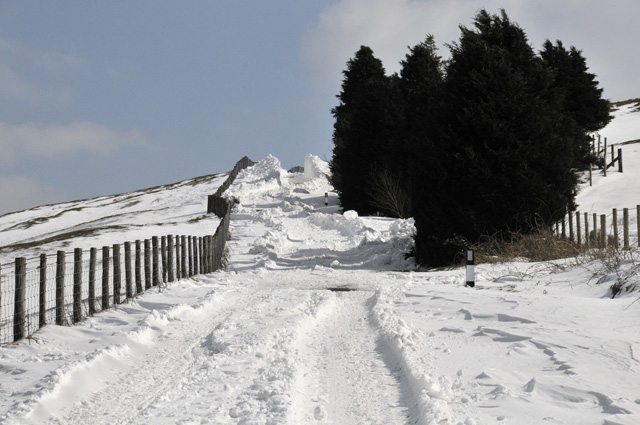
To my right, Bacheiddon's fields had been blasted clear of snow in many areas. What remained carried a hard glaze of ice. Beyond, the same glaze created a shimmering effect. At least there was some grazing to be had here and quad-bike access had been established. These sheep would be OK.
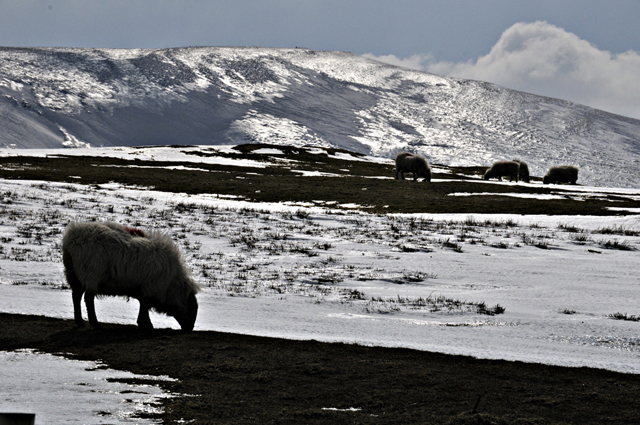
Approaching the first major drift....
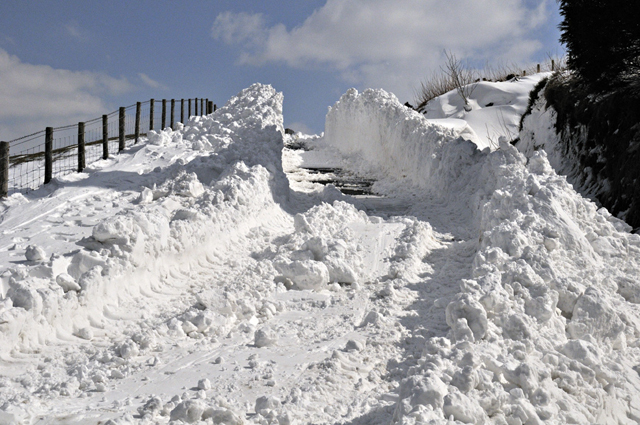
My staff - a standard broomhandle - for scale!
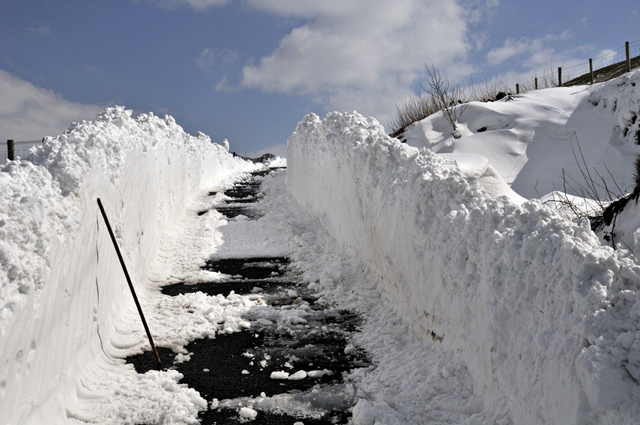
Retrospective looking downhill....

Above, the drifts eased on the windswept upper section of the road. Again, that heavy ice-glaze over the distant hillside...
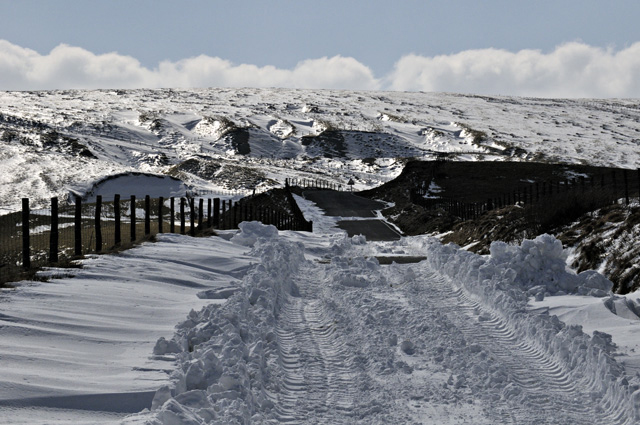
Near this place, looking out left, there is a small, narrow valley. With steep west-facing sides it gathers much snow in an easterly blizzard, and there are useful fences to act as depth-gauges. In January 2010 this place featured following a major snowfall, when drifts went up over the fence-tops:
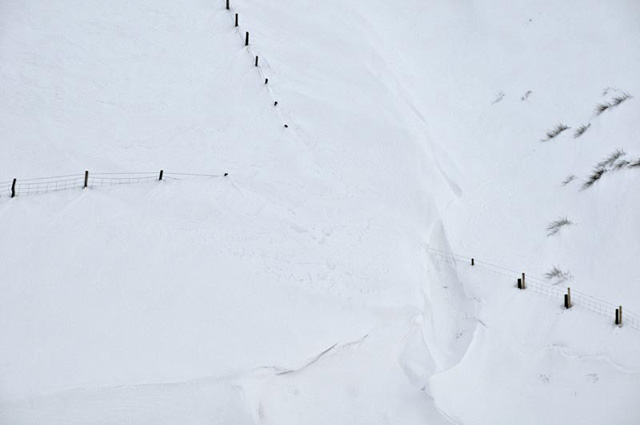
January 2013 saw significant snow, but it only just topped the fence:
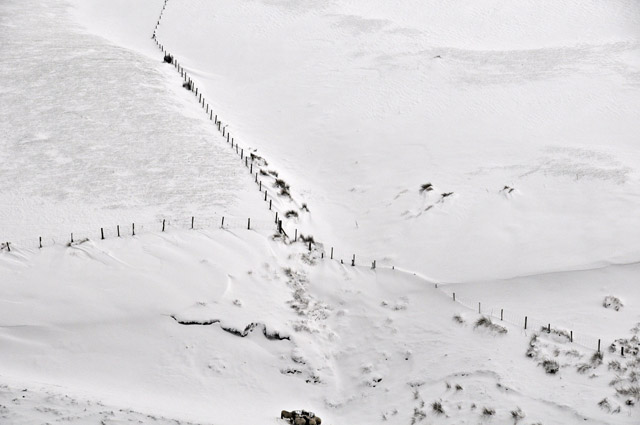
By comparison, March 2013 saw the creation of this fantastic bit of natural sculpture:
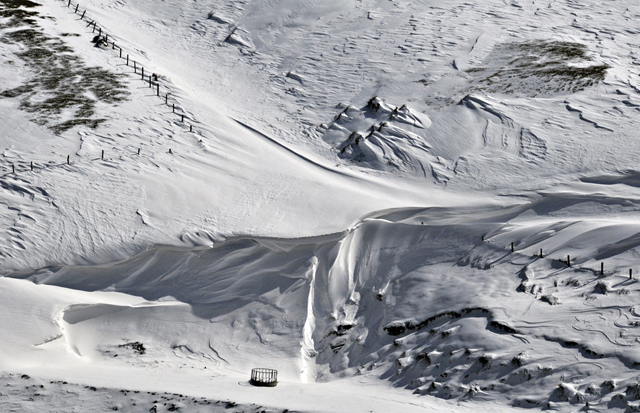
Hands-down winner! Below I've zoomed out a little. That's a standard sheep-feeder and the overhanging cornice above it is huge:
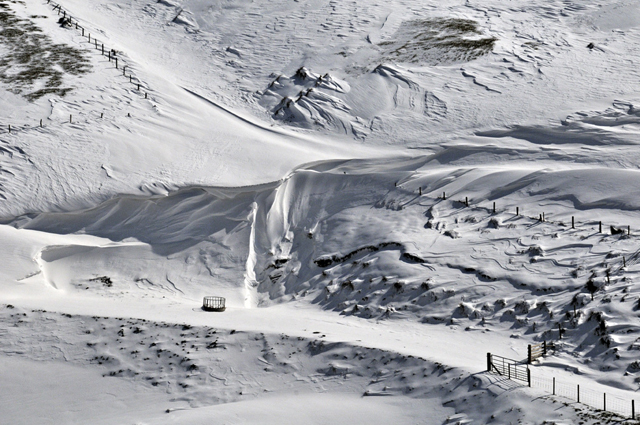
Across the hillside to the R another large cornice stretched for a few hundred metres:
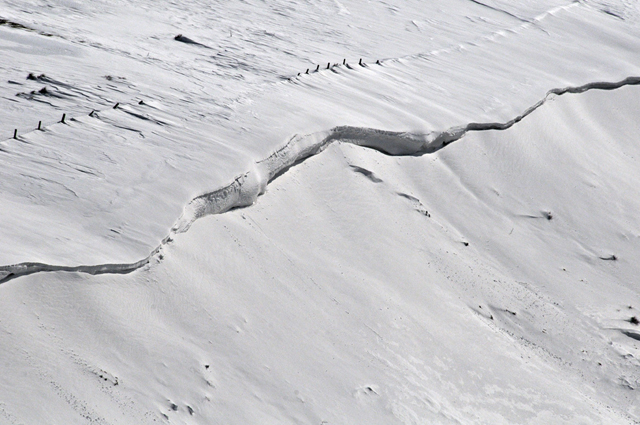
Continuing on my tramp, I neared the top of the pass at about 520m. Here, the road runs in a hollow with fence-topped banks either side - it's always a snow-trap. This is the spot where the JCB had given up on the job for now....
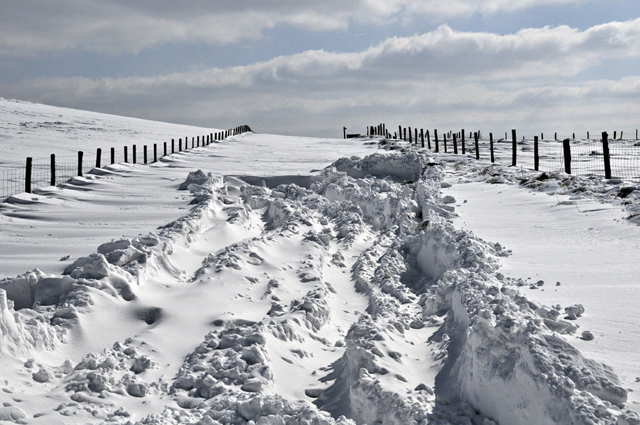
I was relieved to see that the snow had compacted enough to take my weight. It's getting on for 2m deep here!
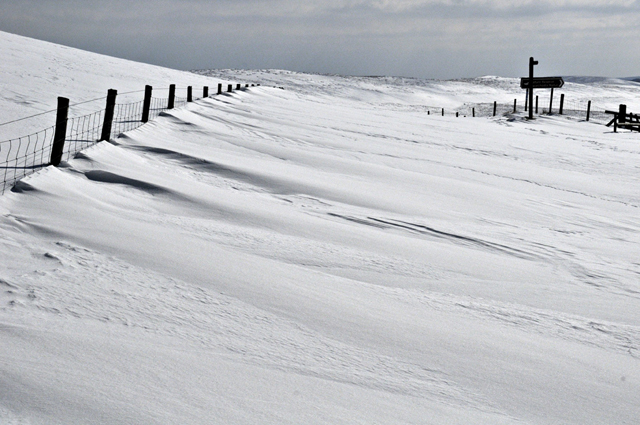
By the turn-off for the Glaslyn track, only the top strand of the fence was visible...
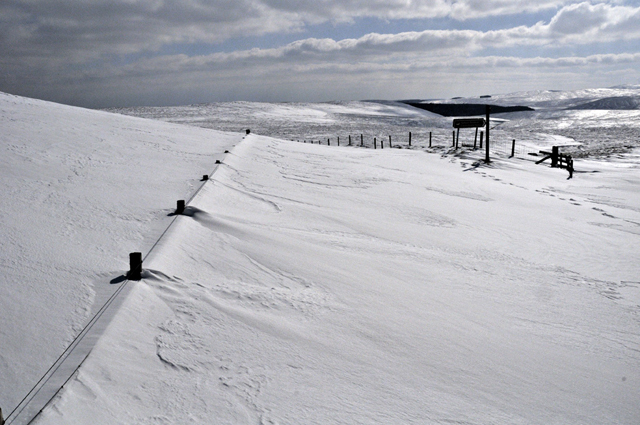
Rounding a corner I was surprised to spot a couple of distant vehicles. Had the road been cleared up from the Dylife side? They normally send in a JCB from there. I continued, only to come across the scene below:
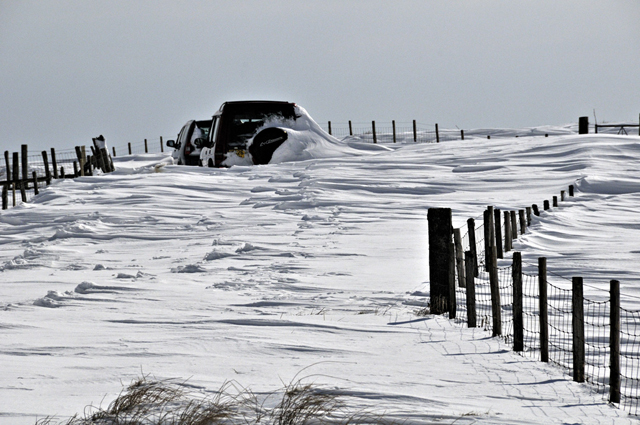
These must have been abandoned almost a week ago. Plenty of old footprints around them and leading off downhill, and a glance (just in case) showed no occupants...
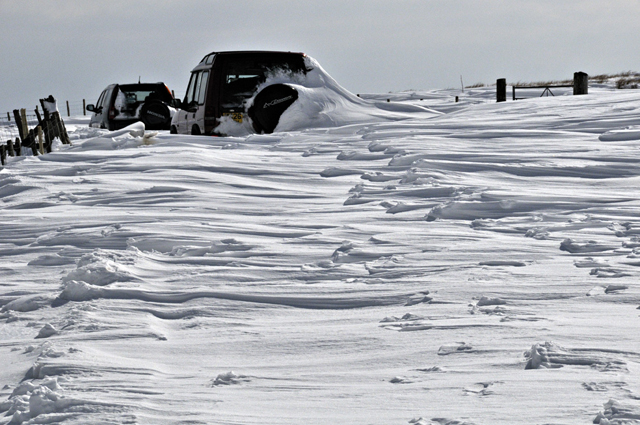
This section of the mountain road is usually the worst - it's recessed between earth banks and sits atop an east-facing grassy slope. The snow all blows uphill and ends up here, along a few hundred metres.
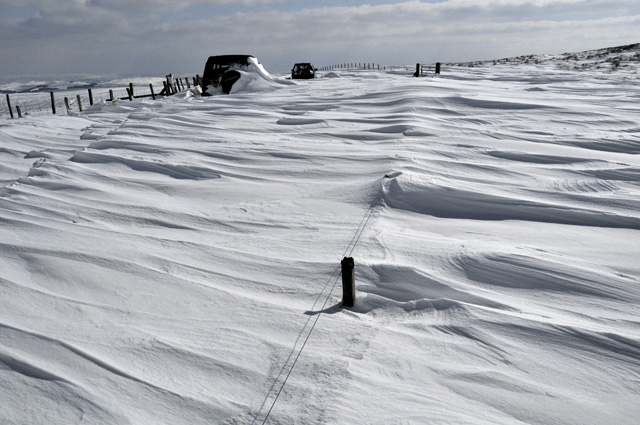
Downhill a bit and I found where the JCB coming up this side had given up for now:

And so it was back over the top again, retracing my outgoing steps....
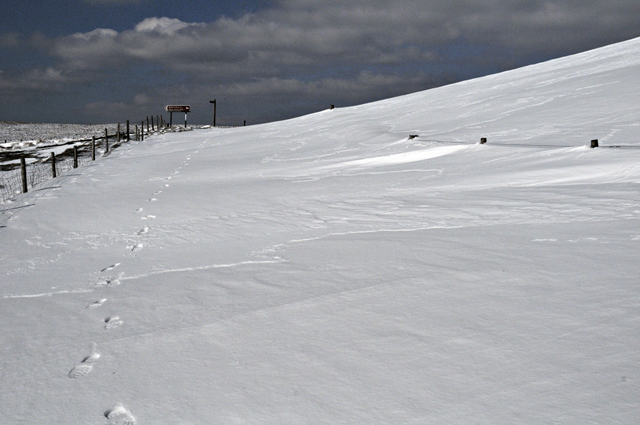
I stopped at the Glaslyn turn-off to view the tundra-like scene. Plynlimon in the background, again with that heavy ice-glaze:
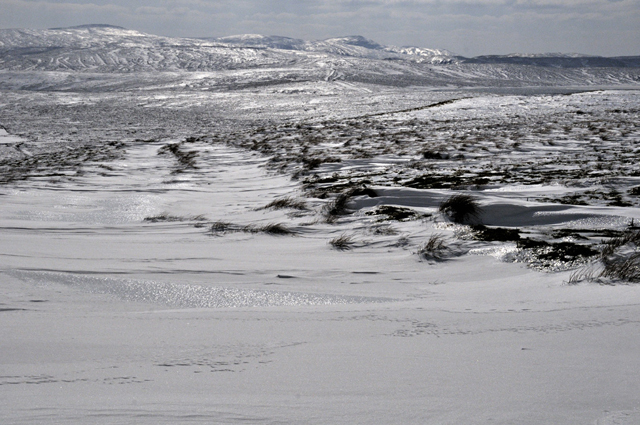
Here's a zoom-in. A friend, Nick Fenwick, was up there at the time, a coincidence we later discovered in the pub! Conditions were reported as pretty icy.

Five days later on April 3rd, having heard the boys had gotten the road reopened, I went to see how the thaw was getting on. Slowly! Out of sight to the R of the road, the drifts still covered the fence. This lot is going to take a while to clear...
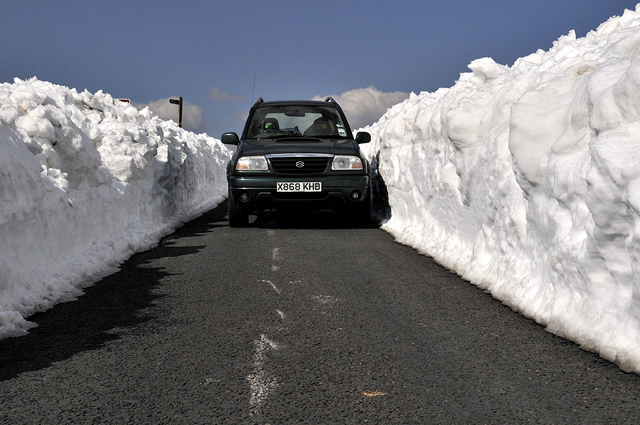
Neither had the ice gone from Plynlimon....
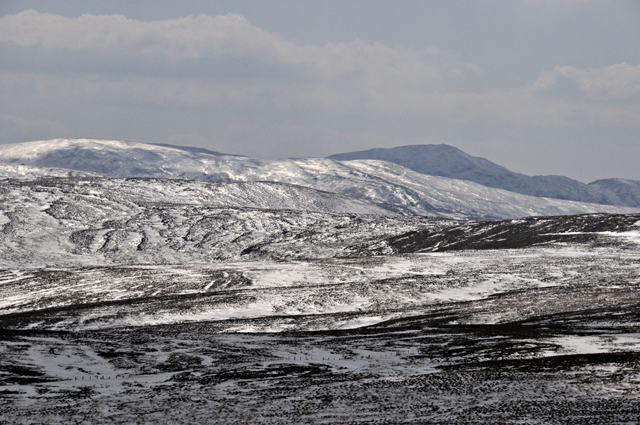
Zoom-in showing the sun flaring off the ice-surfaces like the reflections off mercury:

One consequence of the late very cold spell has been the complete postponement of planting up the veg-garden. The soil needs to warm a lot more before it is worth it. This year I had planned to plant through a mulch of seaweed: however, nesting birds (crows by the amount of mess) and the strong dry east winds were spreading the dried weed all over the place:

I decided to arrest this process by digging it into the beds. The image below is of a dug-over bed that was seaweed-mulched twice in 6 months. The worms seem to love the stuff!
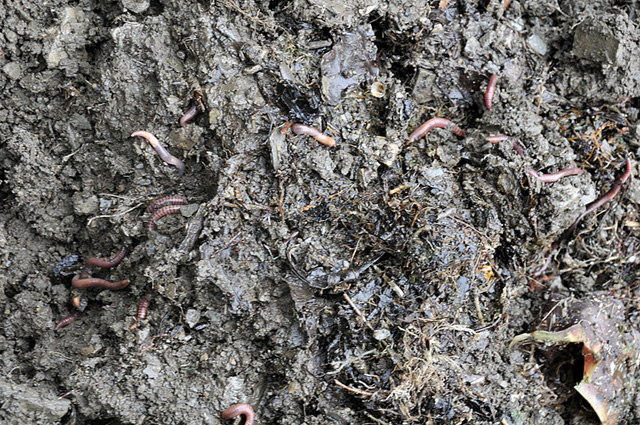
In turn, the resident robin turned up straight away for a free feed!
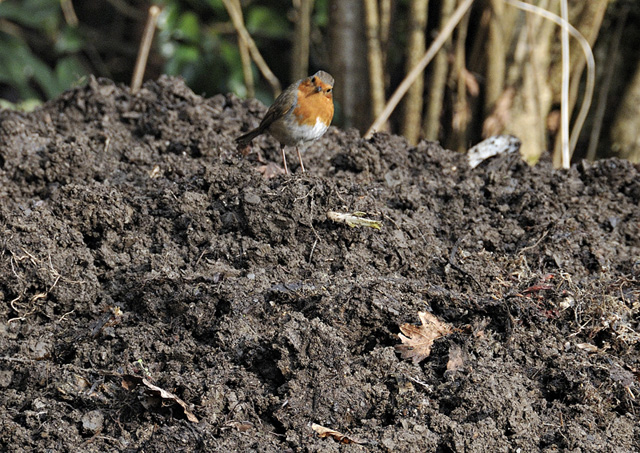
Times must be hard - it's unusual to see the two male robins this close together. Normally they are very territorial and liable to fight....
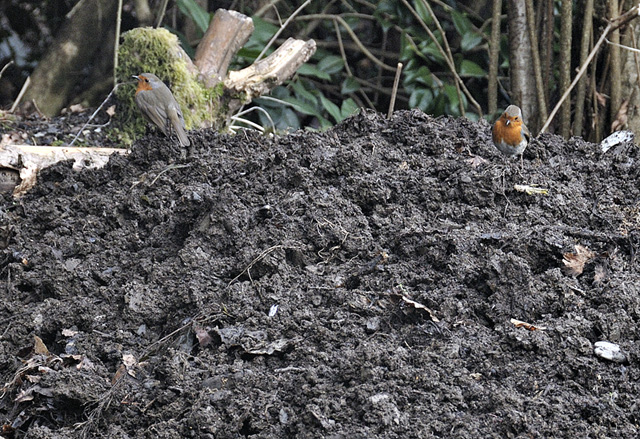
On the subject of looking after the bird population, having had the bird-feeder emptied by squirrels that chewed through the wire, I took a few bits and pieces and rigged up this squirrel-proofing device: a length of plastic rod, three cut-off plastic bottles and a few cable-ties. Will it stop them?
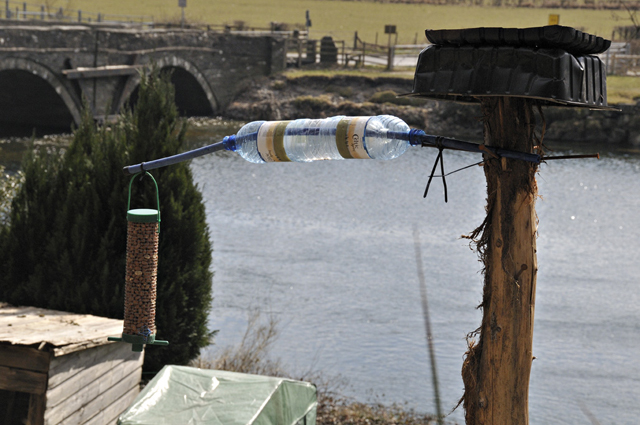
The intended beneficiaries were straight on the case!
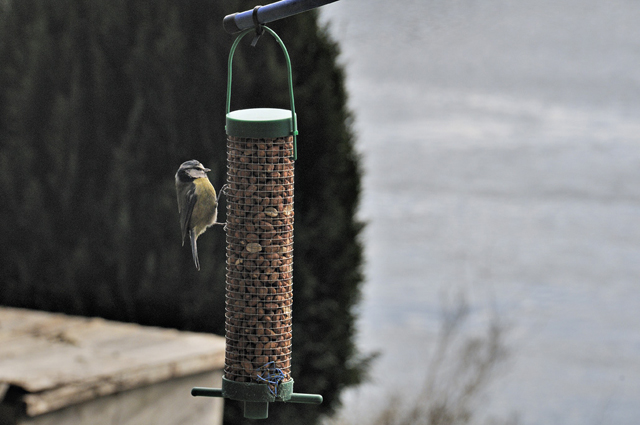
Signs are spring are slowly becoming more apparent, such as the wild garlic coming up through the leaf-litter:
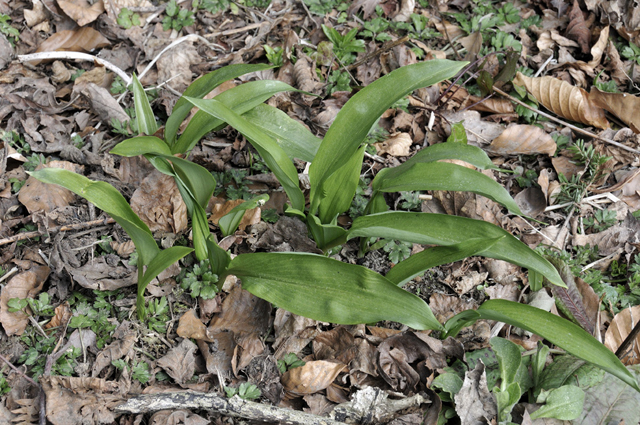
In the forecast model charts, there are growing signs of a warming-up of the weather by mid-month as the massive Greenland High declines and the Polar Vortex re-establishes itself. Spring really has been dragged kicking and screaming into being in 2013, but it looks as though, at last, it really is just around the corner!
More soon........
BACK TO WEATHER-BLOG MENU
New! Fine Art Prints & digital images for sale-
Welsh Weather & Dyfi Valley landscapes Slide-Library - Click HERE